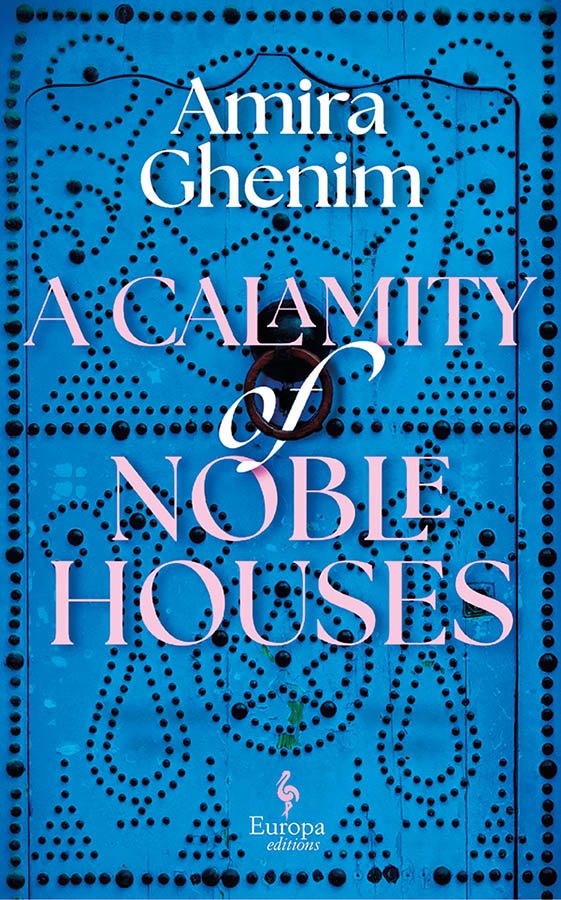A magical dimension
A prize-winning novel about family tension is set during a period of tumult in Tunisia.
By Marcia Lynx Qualey
Like any Tunisian of her generation, Amira Ghenim learned about the maverick intellectual Tahar Haddad (1899-1935) when she was a middle-school student. Haddad—a trade unionist, social reformer, and revolutionary—was the author of an influential book on women’s rights. The book, which was published in 1930, led to a series of progressive laws more than 20 years after his death. In the mid-1990s, Ghenim says, schoolbooks lauded Haddad’s role in Tunisian history. And yet, to this day, his legacy is a matter of heated debate.
“His image has often been either idealised or demonised,” Ghenim says in a discussion of her recent novel, A Calamity of Noble Houses, in which Haddad plays a key role. The multigenerational novel was shortlisted for the International Prize for Arabic Fiction in 2021, and in October, its French edition won the 2024 Prix de la Littérature Arabe. It also appears this spring in Miled Faiza and Karen McNeil’s English translation.
Although Haddad is a central figure on the fateful night in 1935 that animates Ghenim’s novel, her book is not a portrait of the man. Indeed, it never really looks at Haddad head-on. Rather, it is a portrait of two upper-class homes in which the middle-class Haddad is scarcely welcome, where he is almost always just off-camera, or glimpsed through doorways and windows, at the back of a room, or passing in the street.
This was a way of showing that Haddad, while a great historical figure, was not an isolated “main character.” Instead, Ghenim says, she wanted to stitch him into the fabric of his time. More than showing the man himself, she wanted to show the impact of his ideas, particularly the impact of his deeply influential book, Our Women in the Shari’a and Society.
By decentering him, she chose to make Haddad neither hero nor villain. “In choosing not to make a frontal and linear portrait, I wanted to restore his complexity, to show how his memory is filtered through the views and stories of others.”

The author, Amira Ghenim. Photo: Basso Cannarsa / Agence Opale / Alamy.
Ghenim’s polyvocal novel begins with an introduction by one of the descendants of the two “noble houses” that anchor the novel: the Rassaas and the Ennaifers. These houses were joined when Mohsen Ennaifer insisted, against the advice of his parents, on marrying the thoughtful and strong-willed Zbaida Ali Rassaa. The two had already been married for several years on the violent night in December 1935 to which the novel insistently returns, with each narrator giving us a slightly different view of events that ended in Zbaida’s permanent disability. Slowly, we come to our own conclusions about who is to blame, although we never hear from the two figures at the centre of the storm: Zbaida and Haddad.
At the eye of the storm is a gentle love story, between the upper-class Zbaida and the more modest Tahar Haddad, who had worked as her tutor. While we see little of their interactions, a note arrives shortly after Haddad’s death that leads Zbaida’s in-laws to suspect the pair had been having an affair. Different members of the two households take turns telling their stories, concealing and revealing parts of the family tale as it unfolds not just in 1935, but through the 1940s and ‘50s, as Tunisia grappled with the changing role of women, new access to education and social mobility, racism as it affected the descendants of former slaves, and the political landscape both during and after the French occupation.
We see notable historical events not at the centre of the story, but rather at a distance, and there is almost no mention of the economic and political ideals that animated Haddad’s life. This distance, Ghenim says, “invites the reader to be active, to question what they hear, to fill in the gaps, to deconstruct what they think they know.”
It is not only the nobles who are given space to narrate. The first to tell her version of events is Luiza, who is not a member of either family, but rather a long-time servant and former companion to Zbaida. Although Luiza tells her story from the vantage of the near-present, her version of events is shaped by the same loves, resentments, and jealousies she felt in 1935.
Later, we hear from the Black maid Khaddouj, who is treated far differently than Luiza. While Luiza socialises with the Rassaa daughters, Khaddouj is nearly invisible to the Ennaifers. When Khaddouj tells her mistress about the death of her mother—who served the Ennaifer family all her life—Jnayna hurls a jar of kohl, breaking it, and complains, “She died? This is just what I need. Couldn’t you have lingered a day or two, Zina? Just two days, until after the circumcision of Othman’s son?”
From her vantage as a near-invisible observer, Khaddouj sees things about the family that they do not see about themselves. “One of the most powerful narrative strategies is to give voice and depth to characters from marginalised groups,” Ghenim says.
Even though we know the end of the unhappy love story from the beginning, the novel is nonetheless a page-turner, as each successive character takes us a little closer to understanding what happened between Zbaida and Haddad, between Zbaida and her husband, Mohsen, between Mohsen and his brother Mhammed, and between the two families: Ennaifer and Rassaa.

Ghenim’s polyvocal novel begins with an introduction by one of the descendants of the two “noble houses” that anchor the novel: the Rassaas and the Ennaifers.
Although the Rassaa family is painted as the more progressive, both families were interested in educating their children. Mohsen studied in Germany, while Zbaida and her sisters were initially educated in a French school, and then later in Arabic, at home, by the promising young scholar Tahar Haddad.
While Zbaida’s sisters were lukewarm toward Arabic, Zbaida was passionate about her studies, and, it seems, her tutor. At the same time as Haddad was meeting young Zbaida, he was also preparing to publish his groundbreaking book on women. We see the book launch through the eyes of Zbaida’s father, who doesn’t yet know Haddad hopes to marry his daughter. At the time, Ali Rassaa is stunned to see so many vultures circling the young author, mischaracterising his book and his speech. In real life, as in the novel, the fierce defamation of Haddad’s character destroyed him. As Ghenim says, he died “in the prime of his life, amongst ingratitude, poverty, and illness.”
And yet, how accurate is Ghenim’s history? Was there really a love story between Tahar Haddad and a woman like Zbaida?
Just as in her novel, Ghenim answers the question obliquely, as though she prefers to remain a little uncertain. When she started writing, she says, “nothing in the archives mentioned a failed love affair.”
However, two years after the novel was published, new information appeared in the complete works of Ahmed Darii, an author and a close friend of Haddad’s. “I believe I heard that Darii mentions, in his memoirs, that Haddad had met a woman in the 1930s and that he wanted to marry her,” Ghenim says. “The scandal related to his book apparently prevented it.”
If this is true, it offers an eerie parallel to the events in Ghenim’s novel. She adds: “I think there is a magical dimension in the act of writing that escapes any rational analysis.”
In any event, there is a magical dimension to this novel, which draws us ever closer to the centre of a family and national conflict, and then leaves us to define our own ending.




